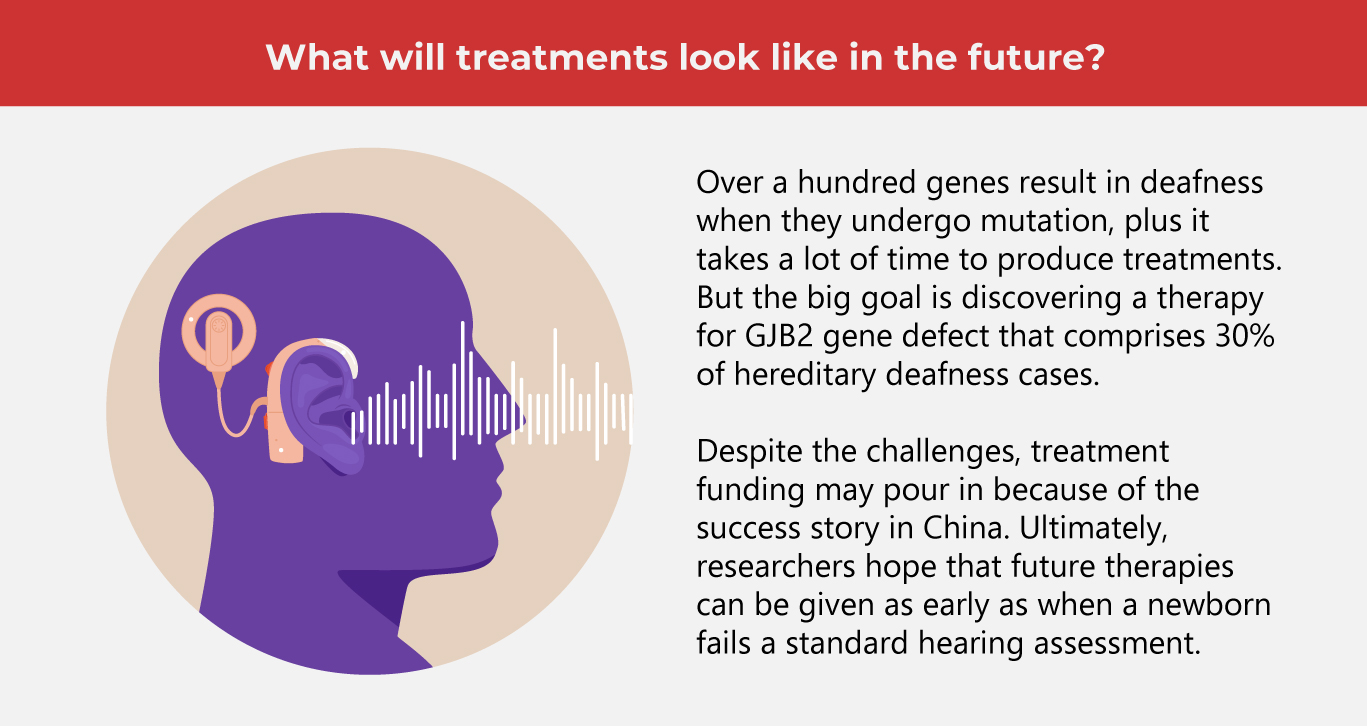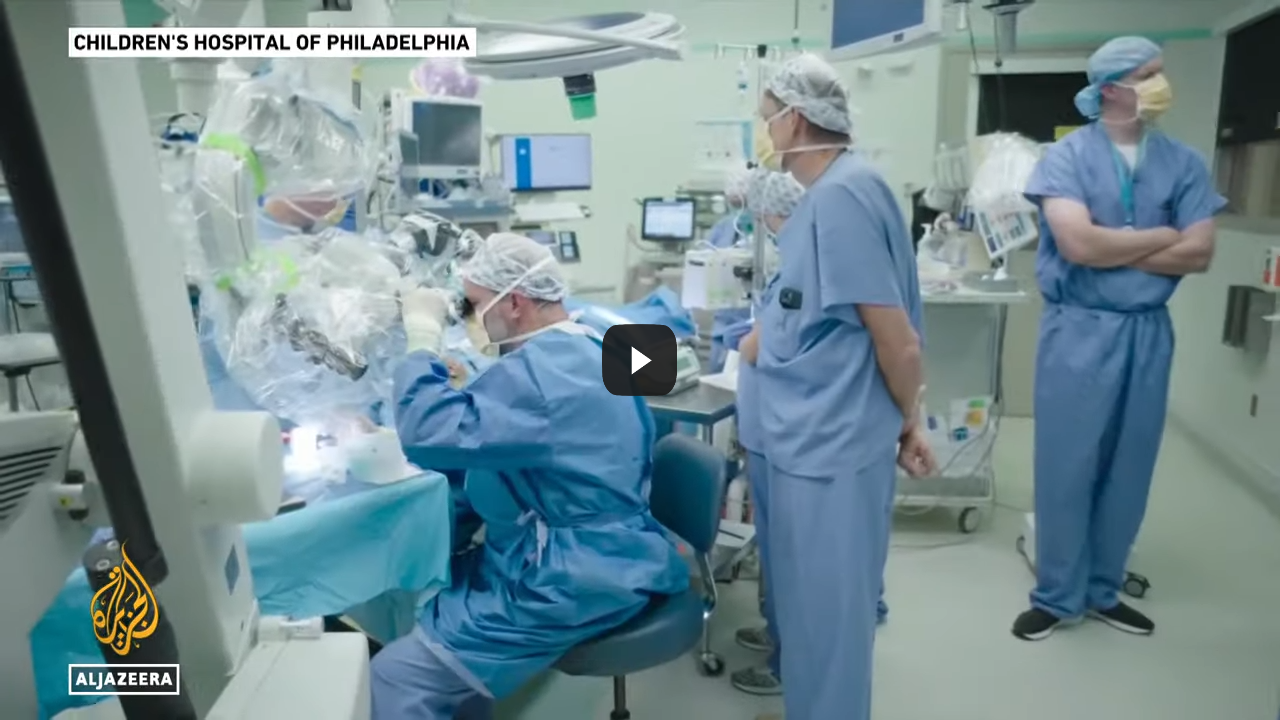A Breakthrough for the Global Deaf Sector

Hearing impairment impacts over 1.5 billion people globally. Around 30 million of these are caused by genetic disorders in children. But these numbers may decrease in the future, thanks to a ground-breaking gene therapy that has found success among non-hearing children. While this breakthrough may grant the ability to hear, it can also serve as a take-off point for other interventions.
Can congenitally deaf children hear again?
This is the question a China-based research program seeks to answer, together with the Massachusetts Eye and Ear Infirmary, Harvard Medical School and Fudan University’s Eye and ENT Hospital. Recently, the team announced that five children aged one to seven who underwent the novel gene therapy have shown promising signs of hearing.
All these children were afflicted with a hereditary alteration of the OTOF (otoferlin) gene, which produces a protein vital in relaying signals from the ear to the brain. OTOF gene mutations can lead to hearing loss and disorders, which is the case for all trial participants.
The trial results, which lasted over 26 weeks, were promising. Because hearing is crucial in language learning, researchers also assessed speech recognition, the capacity to recognize sound as language. All five who received treatment displayed progress in this aspect.
Those who previously had cochlear implants and could therefore hear partially can now hear even with the devices switched off. They can detect speech in a noisy environment, and thanks to their improved verbal communication skills, they are able to participate in phone conversations. Meanwhile, the two younger children who didn’t receive implants can now perceive sound.
Because of its promising outcomes, gene therapy paves the way for other treatments for genetic hearing impairment. The study shows that what researchers learned from animal trials also works in humans. With such favorable results, the team can expand the human trials and deepen its research.
Also read: High-Tech Hearing Aids: Music to Our Ears
How the gene therapy works
OTOF produces a protein called otorferlin, which is essential in transmitting auditory signals that bend the hair-like structures on the ear’s sensory cells. However, around 200,000 people worldwide are born with a pair of defective copies of the OTOF gene. This results in deafness yet with hair cells that may still function with a neurotransmitter. This condition, typically present at birth, is a type of nonsyndromic autosomal recessive deafness referred to as DFNB9.
To initiate the gene therapy, the children were injected in the cochlea with two non-threatening viruses, which carried a part of OTOF’s sequence. After penetrating hair cells, the viruses released their payload, which allowed the cells to produce the crucial protein. It took about four to six weeks before researchers observed the initial signs of hearing recovery.
How did this happen? Inside the cochlea, sound waves are converted into electrical signals transported to the brain via nerve cells, processing them as sound. Because otoferlin has already been introduced through the injection, it can now convey the cochlear cell pulses to the nerves, allowing electric pulses to reach the brain.
While the younger children showed boosted speech perception, some tests were not applicable to them due to their age. Still, a one-year-old subject reportedly showed promising signs of reacting to stimuli and uttering basic words, such as “mama.” Sadly, one of the six subjects displayed no signs of progress, which researchers attributed to a possible immune response to the injected virus.
However, researchers are optimistic about the therapy, which seems tailor-made for DFNB9–a relatively straightforward condition that resulted from only one mutation without causing harm to the cochlear cells. Moreover, the overwhelming response to the research team’s call for participants shows how crucial it is to develop congenital deafness treatments for which there are currently no approved medications.
Also read: How Robotics is Transforming Healthcare
Therapy challenges
Though the therapy shows great potential, it has its share of difficulties. Even before the trial, researchers had to find a solution for the OTOF gene’s huge size, which has a length of 6,000 bases. This means it can’t be loaded inside one adeno-associated virus (AAV) typically utilized in several gene therapies. To remedy this, researchers halved the gene, each part packed into a separate virus. These were then injected into the cochlea.
The viruses may have introduced the gene halves into different locations on the cells’ DNA, but once these are activated, they enable the cell’s mechanisms to construct the total protein. This allows the cells to recover their capacity to convey signals to the brain.
Though researchers have managed to hurdle this challenge, they have no choice but to adopt a “wait-and-see” strategy to gauge the therapy’s effectiveness. Because hair cells in the ear don’t separate, the newly introduced OTOF should ensure the ongoing production of otoferlin, which leads to improved hearing. But will this development last? How can researchers ensure that the ear won’t develop an immune response to the therapy? The only way to find out is more years of observation and data.
While keeping track of the current participants, the research team plans to open the therapy to others with a wider range of backgrounds. If favorable results continue, federal approval of treatment can be achieved in three to five years.
Global gene therapy efforts
Major bodies, including the National Natural Science Foundation of China and the Technology Commission of the Shanghai Municipality, financed the above-discussed gene therapy program. Initiated in December 2022, the project highlighted its utilization of gene therapy to address hearing loss. However, there are also similar studies in motion, including a Philadelphia-based clinical trial that helped a Moroccan deaf boy to perceive sound.
More hopeful news is expected from other gene therapy teams, including the ones based in Philadelphia and China. With all these efforts, researchers cultivate an atmosphere of optimism, bringing hope and accelerating treatment progress.  Endeavoring to address hearing loss empowers deaf individuals to make a choice and fully engage in societal activities. While assistive technology is the current norm, gene therapies open up possibilities, creating a world where hearing loss is no longer a dead end but simply a challenge to overcome.
Endeavoring to address hearing loss empowers deaf individuals to make a choice and fully engage in societal activities. While assistive technology is the current norm, gene therapies open up possibilities, creating a world where hearing loss is no longer a dead end but simply a challenge to overcome.
As one of the top 20 EMS companies in the world, IMI has over 40 years of experience providing electronics manufacturing and technology solutions.
We are ready to support your business on a global scale.
Our proven technical expertise, worldwide reach, and vast experience in high-growth and emerging markets make us the ideal global manufacturing solutions partner.
Let's work together to build our future today.
Other Blog





